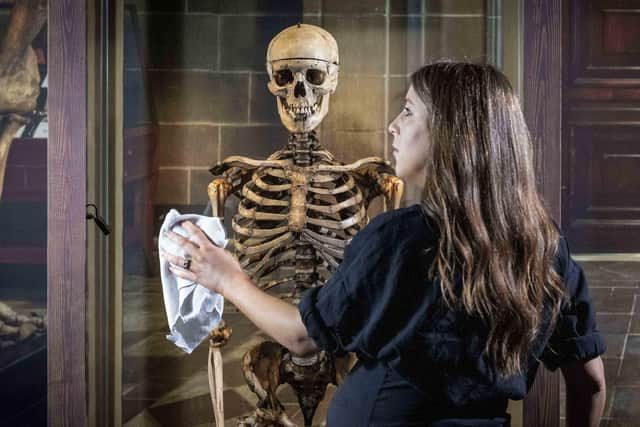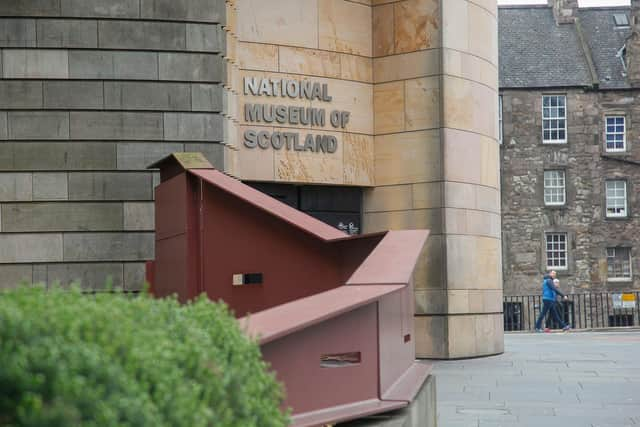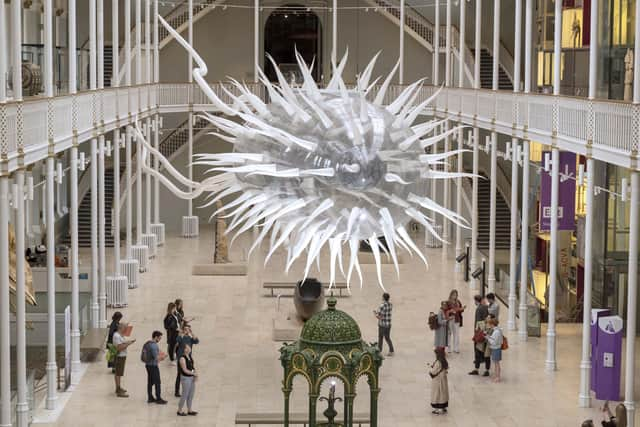National Museum bosses reveal cutbacks are on cards over £2.1m ‘funding gap’
National Museums Scotland, which has its flagship site in Edinburgh, said the scale of its projected funding gap and “financial risks” means it will be unable to maintain its current “level of activity” next year unless the Scottish Government intervenes.
It says a combination of "rapidly increasing costs" and an effective cut of 18 per cent in its funding over the last decade has left it looking at a shortfall worth 7.5 per cent of its annual turnover.
Advertisement
Hide AdAdvertisement
Hide AdNMS says the project funding gap means it will "inevitably have to do less" unless it receives a significant increase in backing from the Scottish Government for the next financial year and beyond, stating: "There are no savings to be made without reducing the activities we undertake."


NMS has revealed its predicted shortfall in income and the prospect of cutbacks weeks after the National Galleries of Scotland revealed it was facing a financial crisis “more serious and more difficult to deal with than the pandemic itself.”
Director-general Sir John Leighton told the Scottish Parliament that it would lead to a “severely reduced” offer, with its national and international programmes reduced, different patterns of opening hours and partial closure of sites.”
NMS’s finanial concerns have emerged as it prepares to open a major exhibition devoted to the long-running science fiction TV series Doctor Who, which is due to run from early December until May of next year, the show’s 60th anniversary year.
NMS has cited "rapidly increasing inflation," new costs to meet zero inflation targets, pay awards to help staff cope with the cost of living crisis and planning for its energy bills to "rise significantly" at the end of the current financial year when its current tariff ends. NMS, which also runs the National Museum of Flight in East Lothian, the National War Museum at Edinburgh Castle and the National Museum of Rural Life in East Kilbride, said it was "finding it hard to quantify the gap in our budget for next year as there are so many unknowns."


NMS is among dozens of arts organisations to have lodged evidence with Holyrood’s culture committee ahead of the Scottish Government setting its budget.
Its submission states: “Even without Covid, over the last 10 years we have experienced a real terms decrease in grant-in-aid of over 18 per cent. In addition, there has been no allowance for inflation.“It is within this longer-range context that, just as we are trying to rebuild our business’ stability post-Covid, we are facing rapidly increasing costs in our utilities and operational expenditure, new costs created by the demands of meeting net zero targets and pressure for a 35-hour week and pay awards that will help staff cope with the cost of living crisis.
Advertisement
Hide AdAdvertisement
Hide Ad"This means that, without real terms increases in our grant-in-aid, the shortfall in funding will have a direct impact on the services we offer.”
A spokesman for NMS said: “For the moment, we have some protection against the widely-publicised rises in energy costs thanks to the fixed-rate agreement within the Scottish Government framework which covers the current financial year. “However, these costs are certain to rise significantly when that agreement ends.


"The main focus of our concern is the coming financial year. If our budget continues to stand still as our costs increase on the scale we anticipate due to rapidly increasing inflation, then we are inevitably going to be able to do less.
"Until we know our financial position for the year ahead, it is impossible to give detail as to what that impact on our services might look like.
The main National Museum of Scotland complex on Chambers Street in Edinburgh attracted 1.2 million visitors in the first half of this year, around 92 per cent of the figure for the equivalent period in 2019, the last full year before the pandemic, when its overall tally was 2.2 million, around 9,000 more than Edinburgh Castle.
Last year the museum regained top spot from the Royal Botanic Garden in Edinburgh, despite the significant impact of Covid restrictions.
NMS said its financial outlook for the current financial year had been bolstered by a “faster than expected” recovery in visitor numbers, including from overseas, but was increasingly concerning for future years, event factoring in a forecast that it will be able to attract audiences at pre-Covid levels again.
Advertisement
Hide AdAdvertisement
Hide AdThe spokesman added: "We are currently working on our budgets for next year. The difficulty is that due to real term decreases in our funding for over 10 years there are no savings to be made without reducing the activities we undertake.”
Dr Chris Breward, director of NMS, said: "Our financial risks are significant and many are shared with the museums and galleries sector more generally. The context for the coming year is that for over ten years our funding has not taken account of inflation meaning we are already operating with 18 per cent less funding than we were in 2012.
"In common with virtually every other business in the country, we are finding it hard to quantify the scale of the gap in our budget next year as there are so many unknowns: fuel prices are incredibly volatile, general inflation is increasing rapidly and the pay award for 2022/23 is yet to be settled.
"Our current estimate is a funding gap in the region of £2.1 million – roughly 7.5 per cent of our annual turnover.
"This is of a scale that means, without allowances being made in our grant-in aid in 2023/24, we would be unable to continue with the level of activity we currently undertake.
"We are working closely with the Scottish Government and are optimistic that our budget settlement will take this into account."
Comments
Want to join the conversation? Please or to comment on this article.
